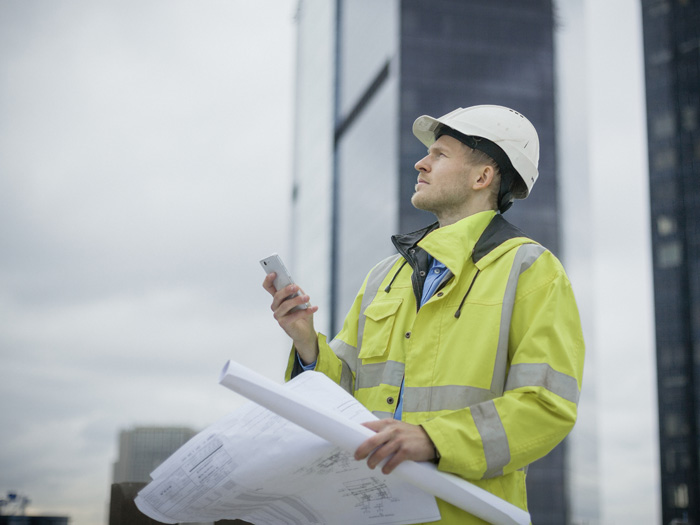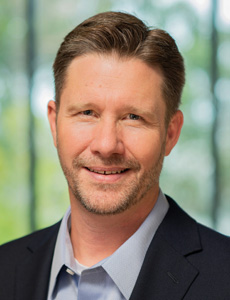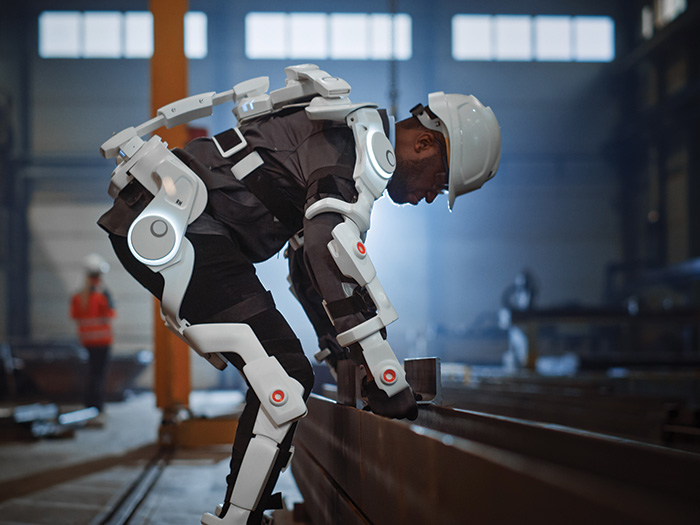How Dome Construction Uses Innovative Technology to Transform Its Worker Safety Approach

Perhaps no other single issue stands out in a business owner’s mind more than the safety and security of employees.
Every workplace has its hazards, and identifying risks and using appropriate tools to highlight threats to worker safety is paramount. Just ask the team at Dome Construction Company, which is employing innovative technologies in the effort to improve worker safety.
Risk & Insurance® connected with Brent Miller, director of risk management at Dome Construction, to learn more about a unique tool the company is using to proactively identify risks to worker safety and mitigate potential threats.
Risk & Insurance: Why is Dome Construction taking such an innovative, proactive approach to identifying risk?
Brent Miller: Dome Construction Corporation believes that our employees are our most valuable asset, and their safety is paramount. Our first core value is “Value Our People,” and we believe that the definition of that includes our trade and business partners, our clients and anyone that steps onto a project site or into any of our offices.
So naturally identifying, mitigating, managing risk and safety is vital for us to be successful.
R&I: Can you explain your collaboration efforts among Dome Construction’s risk management areas? How do you work together?
BM: As we continue to grow, our risks increase, and our approach has evolved.
A dedicated risk management resource gives us vision across all our operations. This approach helps us collaborate across Dome’s internal departments, which makes a big difference in delivering training, tools, resources and support to our teams in understanding risk, planning for it and then managing through it to successfully deliver our projects.
My efforts center around a partnership with all of Dome’s departments to help us effectively identify and manage risks to our people and our business.
While as an organization teamwork and collaboration have always been part of our model, the importance of this was reinforced through the COVID-19 pandemic.
Dome’s safety team, field operations team, department of inclusion, culture, and engagement, department of innovation & learning, HR team, IT team, finance team, shop operations department and marketing team all worked incredibly closely together to navigate the COVID-19 pandemic. We created a multitude of small strike teams from these departments to address every challenge that came our way.
Today the risk management team and Dome’s departments continue this practice, focusing on strategic initiatives, driving continuous improvement, identifying risks and opportunities, and managing and capitalizing on them.
The approach served us incredibly well during the COVID-19 pandemic and continues to do so today — for not just COVID-19-related issues but virtually every type of challenge and adversity, which in turn often can present opportunities that we are able to capitalize on.
We work through virtual and in-person meetings and use a wide variety of technology to help support us, like MS Teams, Miro, Monday’s and eMOD, to name a few.
R&I: What procedures are in play to help identify and mitigate risks for your team?
BM: Risk identification is complex as it often involves hazards that may not always be obvious. The best way to identify the hazards is to ask the experts — the crews performing the work and creating a pre-task plan.
Before starting any task, crew leaders engage their crew members in a discussion of the work they will be performing that day and ask simple questions, such as “[Which] of our tasks could go wrong? and “How can we prevent serious injury or worse?” This approach and pre-task planning is central to our project site safety program.
Our safety program is centered around the concept of capacity — understanding that despite training, skill and safety measures, accidents still happen. The parallel often made to this is automobile accidents.
Despite the myriad of safety components in modern automobiles like seat belts, air bags, backup cameras, blind spot detection, electronic stability control and driver assistance, well over five million accidents occurs yearly in the United States alone.
The simple fact is that humans make errors, and on average, we make three to six per hour on the low end. It’s not a matter of if an error is going to happen; it’s a matter of when an error happens and how we can fail safely.
The answer to that is to plan for when something goes wrong. How do we ensure that we and those that might be around us are not in harm’s way?
Dome’s goal in using the pre-task plan is to create the capacity to fail safely.
To help us accomplish this, we use eMOD, a web-based app designed for the field, by the field, and is now an integral part of our construction safety program. eMOD allows us to engage our team and trade partners in safety planning, compliance, document management and risk management transparently and efficiently.
R&I: What role is the eMOD app playing in your efforts?
BM: Every project Dome manages uses eMOD, so it has helped us to create greater consistency across all our work regardless of location when it comes to jobsite safety.
Better consistency has helped us improve our delivery, and it helps our trade partners with knowing what Dome requires on our project sites, which in turn has continued to help further improve performance.
R&I: How has the risk environment space evolved both within Dome and the industry at large?
BM: Technology is certainly something that is evolving, and we’re seeing more and more of it coming into the construction industry.
We adopted eMOD as our safety platform in 2019, and it has been a game changer for us. eMOD has helped us not only better manage our safety program but also helped us to scale our operation.
Since we started using eMOD, we have increased our annual hours of exposure by more than 200,000 hours and have added to our geographic footprint in terms of service area.
We’ve been able to successfully accomplish that with the same number of safety resources, and the kicker is that since we were able to dramatically reduce the amount of administrative time, we have been able to focus their time out on the project sites where they are able to help us better manage our risk.
We credit the app with also helping us improve our safety compliance while also increasing our team’s understanding of our safety programs while also decreasing the amount of time we spend on compliance related issues.
Our field teams are able to use the tool to more effectively and efficiently complete our safety-related responsibilities each day, and we regularly hear from our trade partners that it has helped them do the same at our projects.
R&I: Can you explain your company’s risk safety program? What procedures are in play to help identify and mitigate risks for your team?
BM: When it comes to field safety, our Injury Illness & Prevention Program outlines our responsibilities to project site safety.
eMOD has helped Dome to accomplish those responsibilities each day, not only faster but also better than we ever have before. The tool is set up for construction, and the workflows are perfectly aligned with the construction activities.
The transparency eMOD creates across our projects and within our projects has helped us to improve our safety processes. The engagement eMOD helps create between Dome, our trade partners, and our field crews is remarkable.
The dashboard eMOD has is a key area that has helped us better identify where we have risks and what those types of risks are. Using the tool has allowed us to stop guessing which project sites need help and support, and now we can see that in real time, where we can take action and address issues when we can have real positive impact.
R&I: In your role as director of risk management, what are you hoping to accomplish? What are some key long-term safety goals you’ve established?
BM: My primary goal is to continue to help Dome focus on our core value of “Value Our People,” because if we help them to be successful, we all thrive.
After that my aim is to help our organization reduce our risk, better manage our risk, and capitalize on the risks we take to reach even greater success. There is a return on investment to be made from this role, and each day I look for ways to help increase that return to reach even greater heights and create more opportunity for our people.
My long-term safety goal is to continue to help our teams better identify risks, manage those risks, and hone their risk acumen while keeping everyone who walks onto one of our projects or comes to our any of our offices safe and free from harm.
Our people are incredible, and if we provide them with the tools and support to build their skills and knowledge, they’ll continue to raise the bar on what we can achieve while creating even greater opportunities for themselves and those that come behind them.
R&I: What do you think the future holds for risk management within the construction industry?
BM: Risks will continue to be omnipresent, and the COVID-19 pandemic has shown us that these can be far reaching and impact not only construction but all industries and society at large. For companies to continue to be successful and grow, we must look for ways to improve and innovate.
With risk comes opportunity, and learning to better leverage risk to reap reward will benefit those that are able to continue to adapt. And those companies that aren’t willing or able to adapt will find themselves being passed by those that can. We intend to be leaders on the side of those companies that innovate, continuously adapt, and thrive. &











